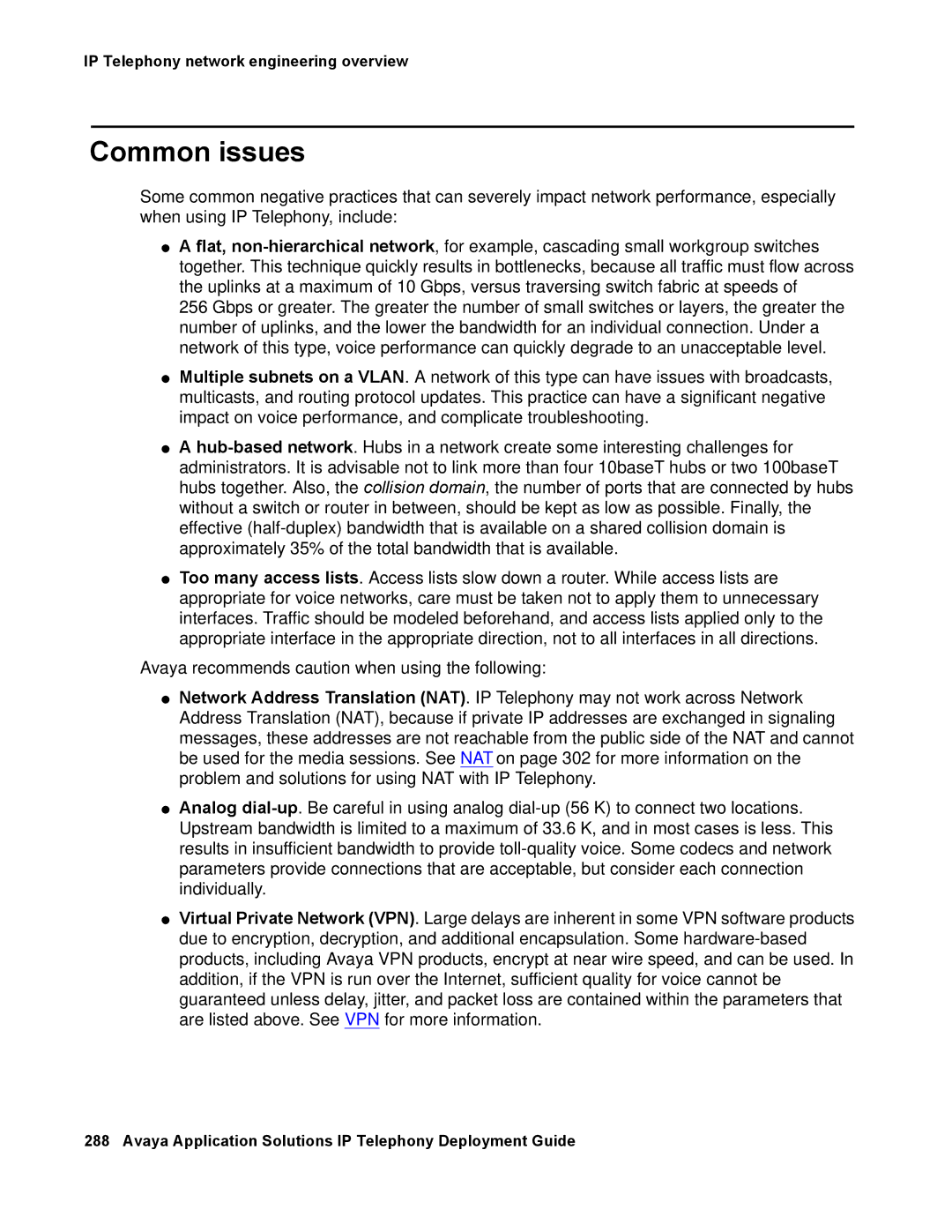IP Telephony network engineering overview
Common issues
Some common negative practices that can severely impact network performance, especially when using IP Telephony, include:
●A flat,
256 Gbps or greater. The greater the number of small switches or layers, the greater the number of uplinks, and the lower the bandwidth for an individual connection. Under a network of this type, voice performance can quickly degrade to an unacceptable level.
●Multiple subnets on a VLAN. A network of this type can have issues with broadcasts, multicasts, and routing protocol updates. This practice can have a significant negative impact on voice performance, and complicate troubleshooting.
●A
●Too many access lists. Access lists slow down a router. While access lists are appropriate for voice networks, care must be taken not to apply them to unnecessary interfaces. Traffic should be modeled beforehand, and access lists applied only to the appropriate interface in the appropriate direction, not to all interfaces in all directions.
Avaya recommends caution when using the following:
●Network Address Translation (NAT). IP Telephony may not work across Network Address Translation (NAT), because if private IP addresses are exchanged in signaling messages, these addresses are not reachable from the public side of the NAT and cannot be used for the media sessions. See NAT on page 302 for more information on the problem and solutions for using NAT with IP Telephony.
●Analog
●Virtual Private Network (VPN). Large delays are inherent in some VPN software products due to encryption, decryption, and additional encapsulation. Some
